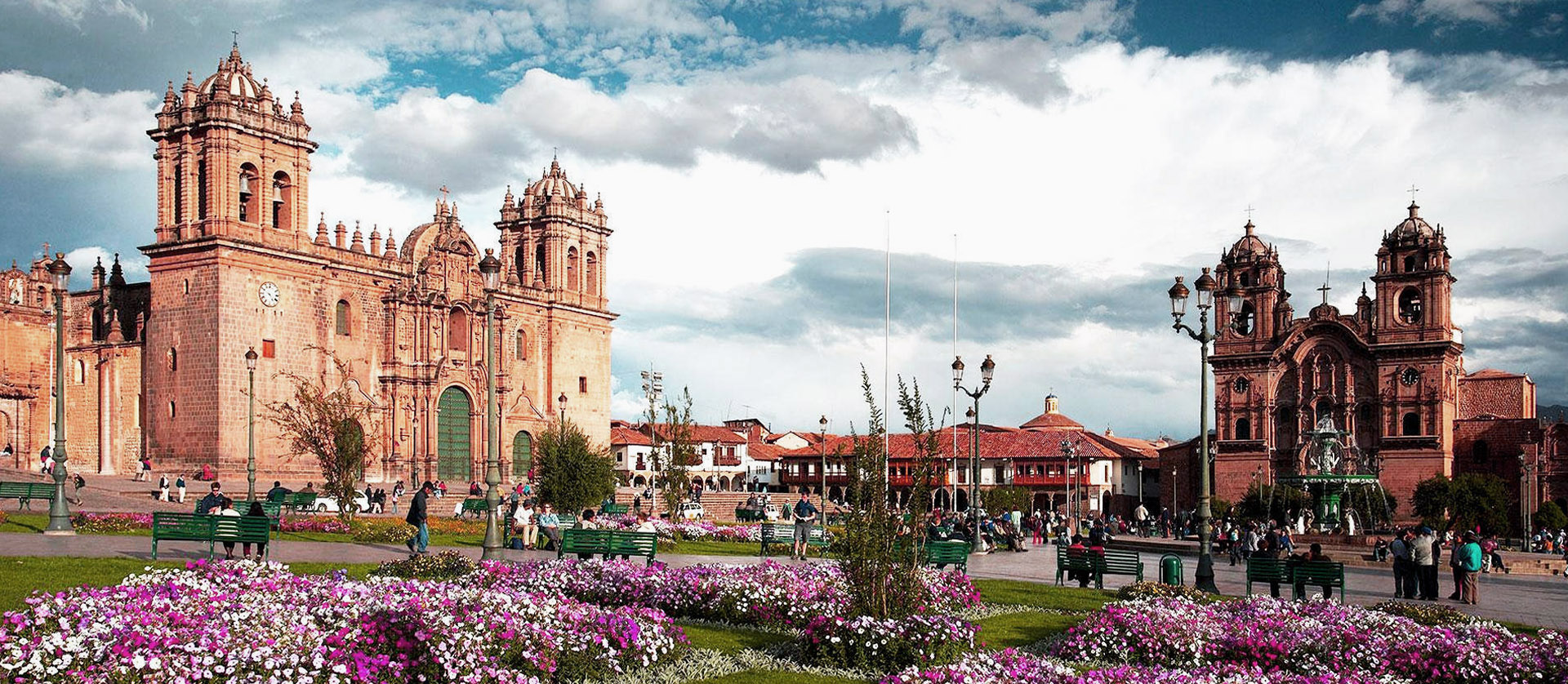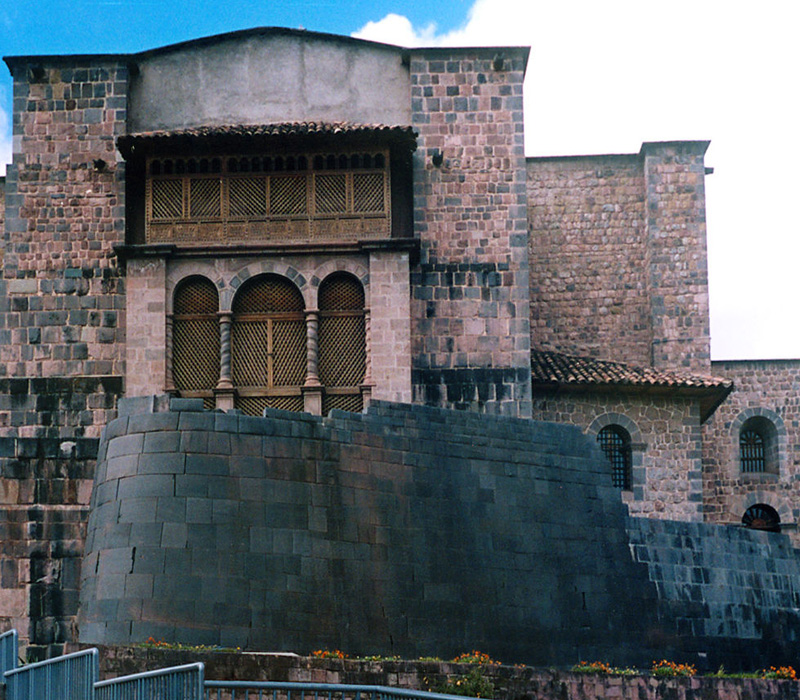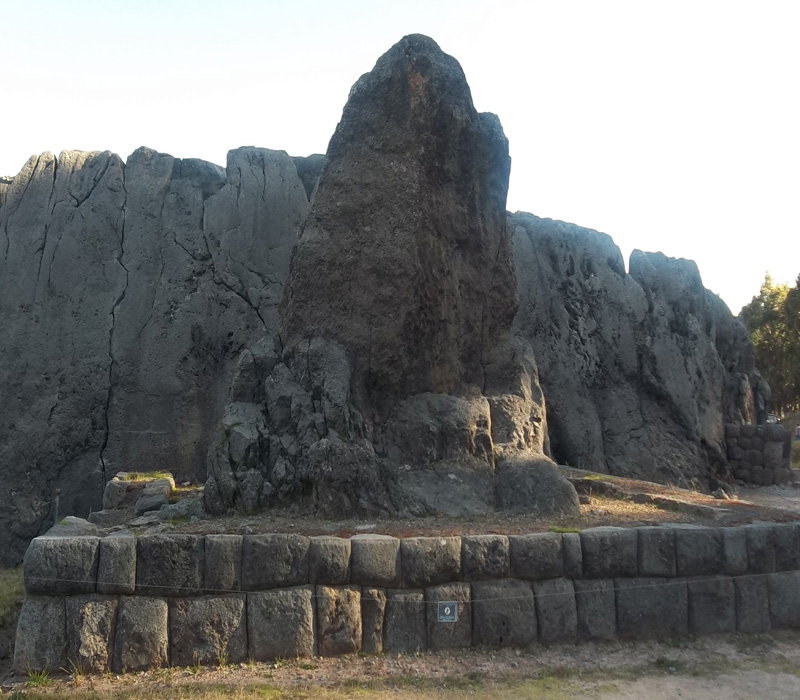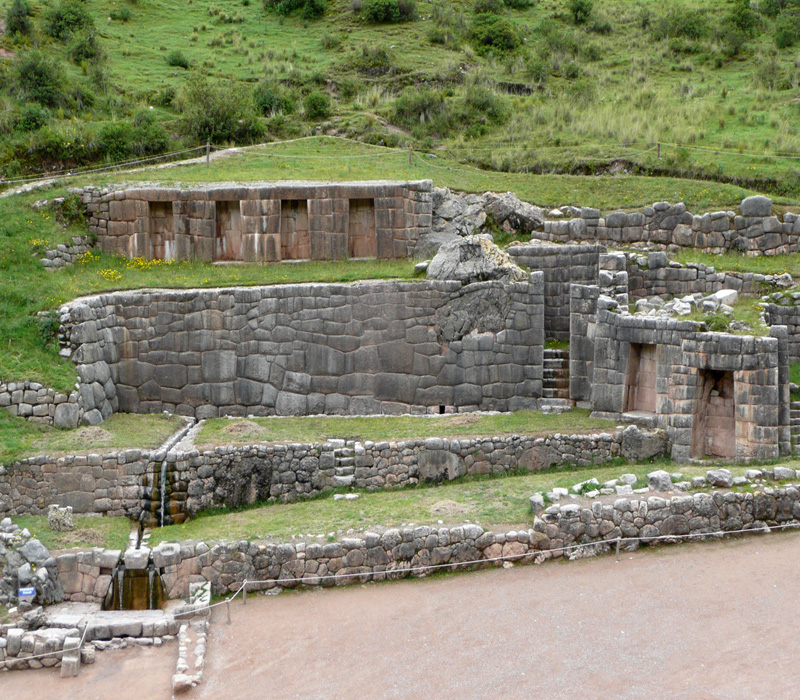Cusco City Tour

CUSCO CITY TOUR – PRIVATE GUIDED TOURS EVERY DAY
In the morning (9 am) or afternoon (1pm)
In the afternoon, we will pick you up from your hotel proceeding to visit the Imperial City. It is a living example of the mix of Andean and Spanish culture. We start the tour at the Convent of Santo Domingo built over the Qorikancha, which was the Ancient Inca Palace and the main worship center of the Sun God. You are given plenty of time to enjoy these incredible sites.
From there we visit the archaeological site of Sacsayhuaman, with its impressive Inca architecture, which dominates the city. Finally, we explore the archaeological sites of Q’enqo, Pucapucara and Tambomachay, which are located in the northeast section of the city. You will return to your hotel in Cusco in the early evening.
QORIKANCHA AND THE CONVENT OF SANTO DOMINGO
The convent was built on the spectacular Corikancha ‘enclosure of gold’. This was the most important temple dedicated to the worship of the Sun and the walls of which were lined with solid sheets of gold. All that remains now is the fine stonework; the conquistadors took the rest and destroyed the temple to build the convent. Corikancha was also an observatory, where priests kept track of major celestial events. Today it houses an impressive collection of canvas paintings from the Escuela Cusqueña of art.
SACSAYHUAMAN
Sacsayhuaman (which means ‘satisfied falcon’) is one of the most impressive sites built by the Incas. It is generally referred to as a fortress; however, it is not certain what its main function was in reality. Current research suggests that it was more likely used as a temple, as Inca tombs have been discovered in the area.
The site is a marvelous archeological feat; even now after it was destroyed, one can only imagine its greatness when it stood in its full glory. The stones in the wall are incredible and the largest one weighs 128 tons.
The Incas envisioned Cusco as having a puma shape and Sacsayhuaman was the head. The magnificent zigzag walls are the major attraction. The grounds surrounding Sacsayhuaman are still used today for the colourful festival of Inti Raymi, which is held to celebrate the winter’s solstice on the 24th of June.
Q’ENQO
The site of Q’enqo (meaning ‘maze’ in Quechua) contains the most impressive carved rocks in the Cusco area. There are carvings everywhere, although some are very indistinct, such as a llama, a condor and snakes have been identified. There are many zigzag channels on top of the natural rock, probably used for pouring sacrificial chicha (a local liquor made from corn).
Below the rock, there are a number of caves and passageways, an altar, which was used for the sacrifices of lamas, and mummifications of buried people have been discovered.
PUKA PUCARA
Puka Pukara means ‘the red fortress in quechua. This is a small site and although the name suggests that it was a fortress, it does not appear to have had any defensive purpose. Probably it was used as an administrative center. The interesting point is the way the Incas built the walls over the rocks.
TAMBOMACHAY
The name means “place of rest” in Quechua. It used to be the royal hacienda of the Inca Yupanqui when he went to hunt in the surrounding area. This site was also thought to have been used as a Temple to the Water. There are some interesting aqueducts, canals and cascades sculpted out of stone, designed to channel water flowing from a nearby stream.
WHAT IS INCLUDED?
- Pick up at your hotel
- Professional English & Spanish speaking guide
- Private transportation to visit all Inca places
- Tax
- Water
WHAT IS NOT INCLUDED?
- Entrance to Archeological sites: Purchase the Boleto Turistico (tourist ticket) of 70 soles (about US$22), at the first site you enter. This can be used for 1 day to visit archeological sites in the Cusco region. (See important info, for other options)
- Entrance of Qoricancha ( 10 Soles per person)
- Meals



